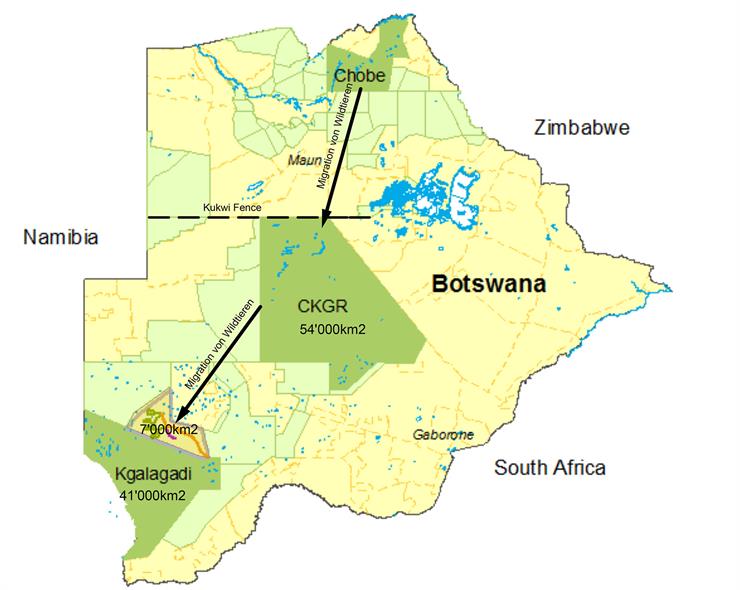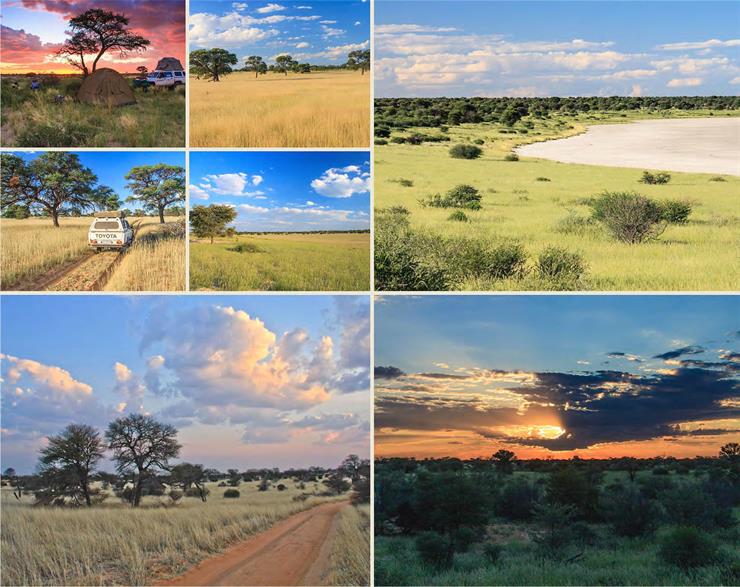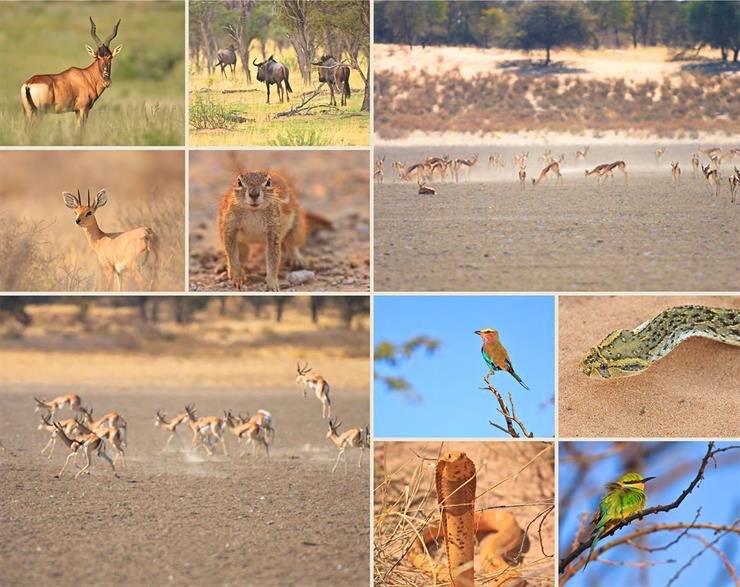Tanate Wilderness Ecotourism Project Botswana
7000 km2 of amazing beauty
Botswana's Kalahari is the largest intact wilderness remaining on the African continent south of the Sahara. Comanis had the blunt realization that wilderness gems such as these are unlikely to survive based on their inherent worth alone. As long as economic growth maintains its most elevated position in national priorities, wilderness will need to be justified on those terms. Change is threatening to accelerate in the Kalahari now that a hunting ban has stymied the primary economic activity over vast remote areas. This leaves the majority of the wild Kalahari that exists outside of strictly protected areas increasingly vulnerable to unsustainable alternatives.
Already there are aggressive proposals to convert large tracts of pristine wilderness to cattle ranching, despite research consistently showing that in the Kalahari context such expansion of the livestock industry tends to drive inequality and poverty rather than alleviate it. It is ultimately poorly-planned livestock developments that have both: a) encroached into the most productive wet season range and calving habitats for migratory antelope, and b) erected fences fragmenting seasonal long-distance wildlife movements. These changing land use patterns combined with a particularly severe drought in the 1980's which lasted several years, precipitated a catastrophic collapse in the once great migratory herds of Kalahari wildebeest, springbok, hartebeest and eland.
Already there are aggressive proposals to convert large tracts of pristine wilderness to cattle ranching, despite research consistently showing that in the Kalahari context such expansion of the livestock industry tends to drive inequality and poverty rather than alleviate it. It is ultimately poorly-planned livestock developments that have both: a) encroached into the most productive wet season range and calving habitats for migratory antelope, and b) erected fences fragmenting seasonal long-distance wildlife movements. These changing land use patterns combined with a particularly severe drought in the 1980's which lasted several years, precipitated a catastrophic collapse in the once great migratory herds of Kalahari wildebeest, springbok, hartebeest and eland.

Not long after, Botswana empowered communities in remote areas to form Community-based Organizations (CBOs) in order to implement Community-Based Natural Resource Management (CBNRM) based on successes in Zimbabwe and Namibia. But wildlife has largely failed to recover. The Government has recently instated a countrywide temporary hunting ban, with fingers presumably pointed to overharvest and illegal hunting (poaching) as the reason for floundering wildlife populations, although this is largely speculative and lacks empirical data. One of the immediate consequences of the hunting ban is that income streams supporting CBOs have all but ceased. CBNRM as a whole is on the verge of collapse and this leaves the future of these pristine blocks of Kalahari wilderness in question.
It was the crux of these discussions in 2012 that led Comanis to register a Botswana-based entity, Tanate Wilderness (Pty) Ltd., with the specific purpose of entering into partnerships with CBOs in order to facilitate wilderness-based ecotourism development that simultaneously addresses poverty alleviation and wildlife conservation. Tanate's Directors comprise a small team of local and international collaborators with expertise in stakeholder engagement and conflict management, sustainable business enterprise development, and wildlife ecology and conservation science. The Comanis-Tanate initiative to develop innovative non-hunting tourism projects jointly with remote area communities as business partners, is the first of its kind to happen in any of Botswana's semi-arid Kalahari.


Photos: Julia Burger
Tanate's present focus is in KD2, a 644,532 hectare Wildlife Management Area (WMA) located directly north of Kgalagadi Transfrontier Park. Designated boundaries between KD2 and the Transfrontier park, and between them and other adjacent and interconnected WMAs, exist only on a map. In actuality, wildlife move freely and unhindered by any visible developments in a seamless Kalahari savanna landscape. KD2 is a strategically important piece of the bigger Kalahari. It's large undisturbed pans attract remnant herds of wildebeest and springbok particularly. They consistently congregate during the calving season in some of largest herds to be seen nowadays, thus KD2's protection may be critical for the eventual recovery of these species' once enormous Kalahari populations.

Photos: Julia Burger
As with other WMA's, KD2 remains entirely underutilized for non-hunting ecotourism. Through Tanate, Comanis has been providing capacity-building support to the community of Zutshwa, primarily via close collaboration with Qhaa Qhing Conservation Trust (QQCT) - the registered CBO and legal authority empowered to manage KD2's natural resources for the benefit of Zutshwa's residents. Tanate's engagement and consultation with the community over the last several years has permitted a strong foundation of understanding and mutual respect.
Together, the Community and Tanate have developed a comprehensive Tourism Plan that is also founded on sound business principles and market research. All Government stakeholders have been overwhelmingly enthusiastic over the partnership and Tourism Plan for KD2. The two parties are close to a legally-binding partnership that will move the project forward over the next 10 years. The showcase tourism offering - a collection of remote wilderness 4x4 trails where self-drive guests have exclusive access to isolated campsites at some of KD'2 most exceptionally scenic pans - may be operational before 2016.

